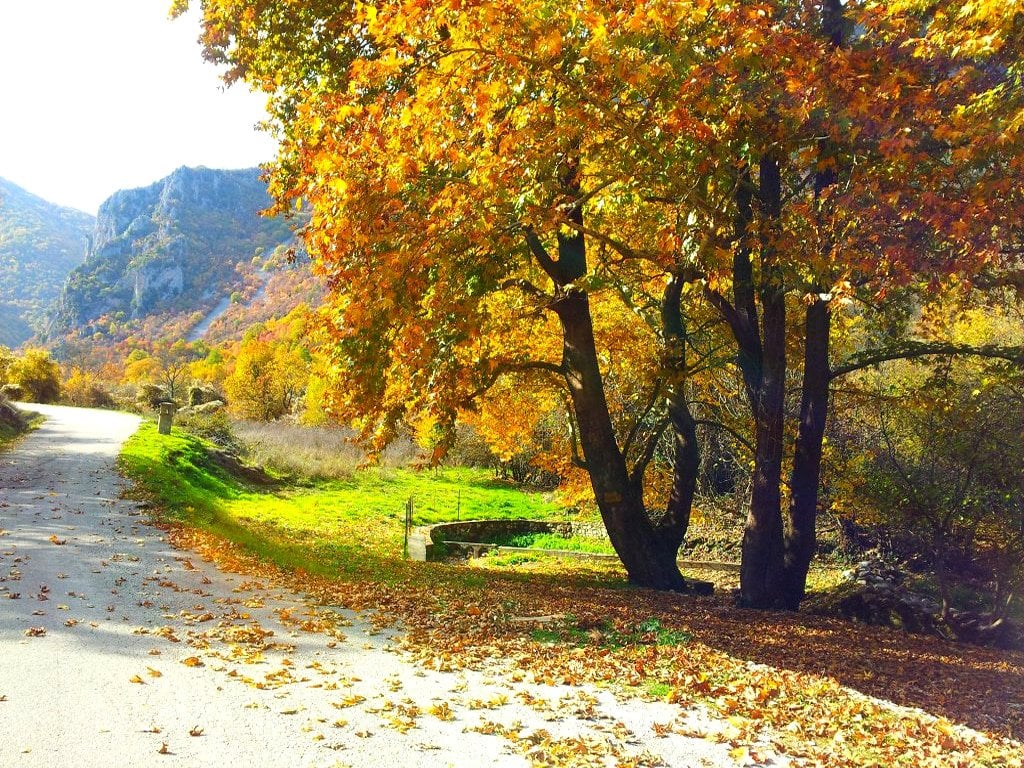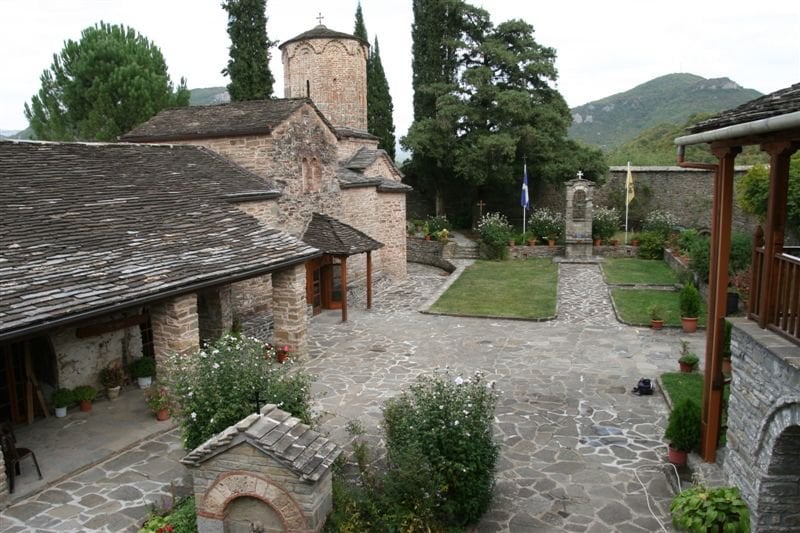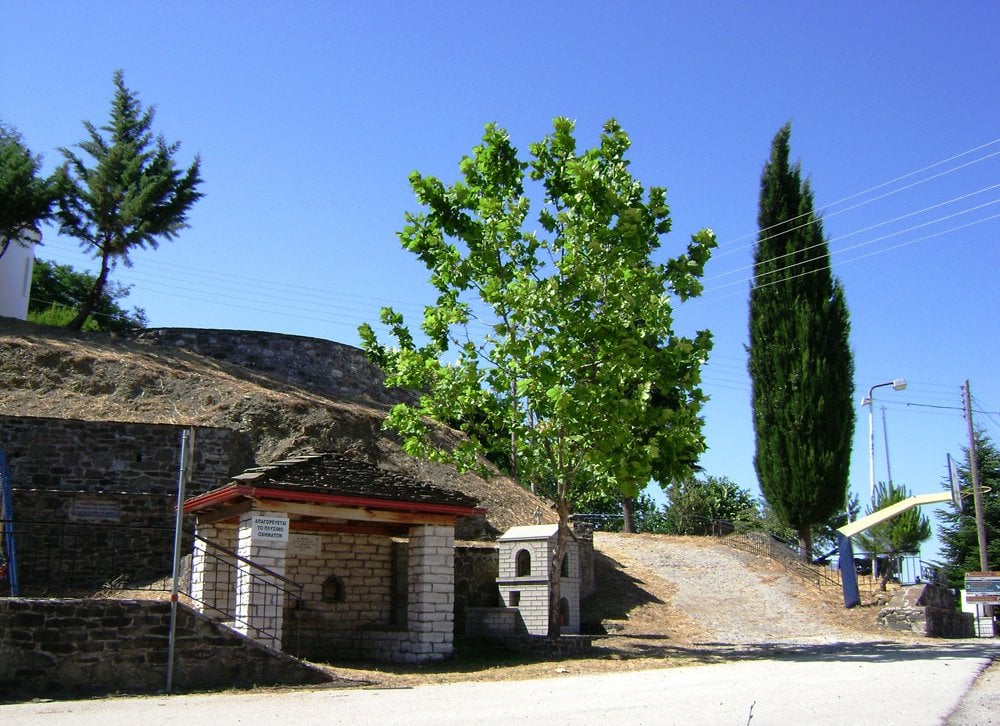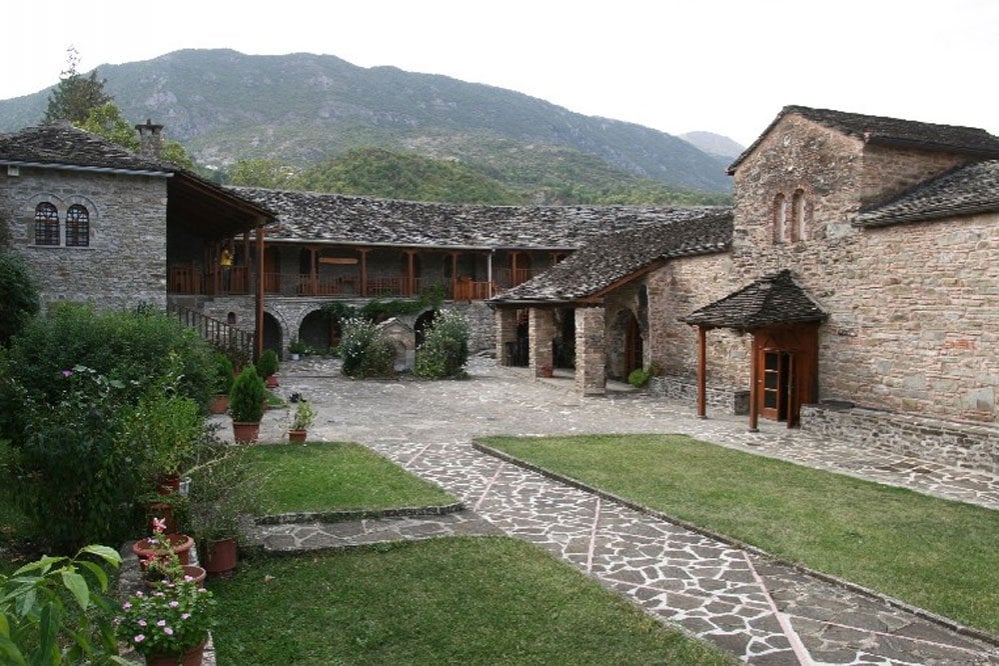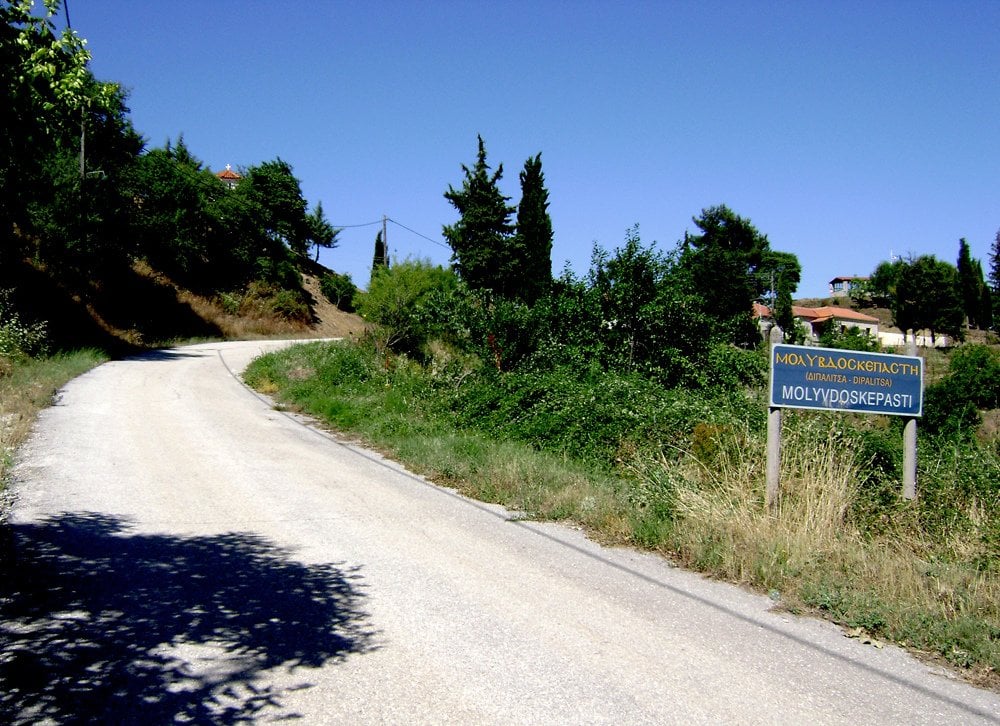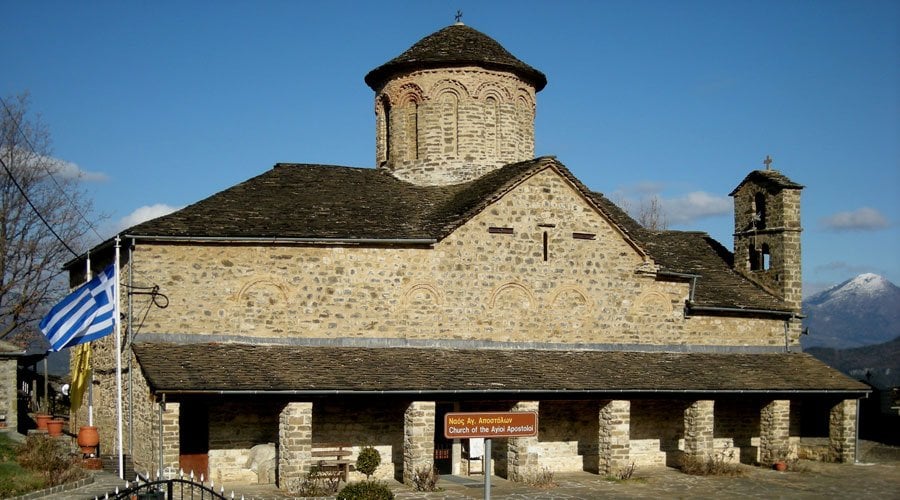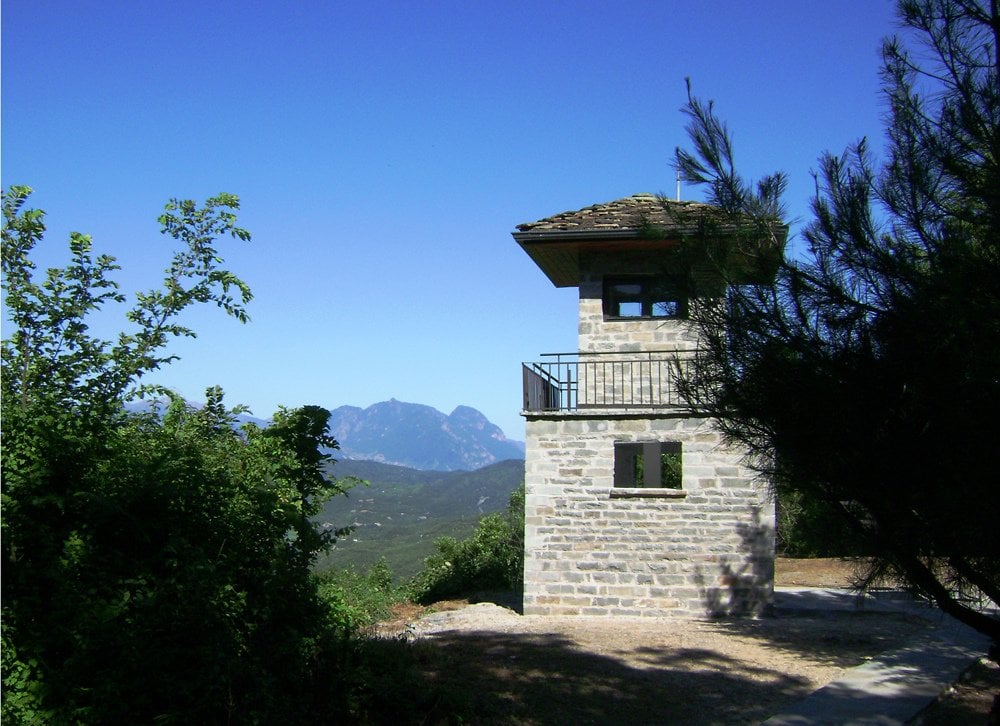The beautiful village of Molivdoskepasto is built on a slope of Mount Nemertsika, 17 km away from Konitsa and very close to the Greek-Albanian border.
During the Byzantine Period, Dipalitsa or Depolitsa (that was the name of the settlement at that time) was the seat of the Archdiocese of Pogoniani. The remarkable Byzantine and post-Byzantine monuments of the area are infallible “witnesses” of the unbreakable historical continuity of the settlement from the Middle Byzantine Period until today.
The inhabitants of the village are farmers, stockbreeders and beekeepers.
Those of you who are in Molivdoskepasto, do not miss to visit the Monastery of Panagia Molivdoskepastos, one of the most important monumental complexes of Epirus. It is located near the confluence of the rivers Aoos and Sarandaporos, at a distance of 400 meters from the Greek-Albanian border.
The monastery, which is dedicated to the Assumption of the Virgin Mary, owes its name to the fact that the roof of its temple was formerly covered with Lead sheets. The former monastery of Panagia Molivdoskepastos was the seat of the Archdiocese of Pogoniani until the end of the 13th century. According to local tradition, the monastery was founded in the 7th century by the emperor Constantine IV Pogonatos (668-685). However, according to the typological and morphological data, the original triangular section dates to the 11th century, while the cross-roofed section dates to the 13th-14th century.
Molivdoskepasto village is an attraction for religious tourism. The monastery of Panagia Molivdoskepastos attracts a large number of believers every year. Apart from the monastery, in the wider area and at a distance of 30 meters from the Greek-Albanian border, is the church of Agios Apostolos. The church, according to the text of the founding inscription, was built in 1537 and the hagiographies were added in 1645. This is the central church of the village, which used to be the seat of the Archbishop of Pogoniani until 1857. The church is built in the shape of a cross with a dome, a five-sided section, a narthex and has remarkable frescoes.
Also, the village has very old churches and chapels, the most important of which are: Agios Dimitrios, Agios Sozontos which dominates at a characteristic hill at the highest point of the village, Zoodochos Pigi, Agia Triada and the church of Agios Georgios.
Another attraction for travelers is the magnificent view which is offered by the Molivdoskepastos Observatory. The visitor can observe both the area of the Greek-Albanian border and the area of the confluence of the rivers Aoos and Sarandaporos (the waters of the two rivers then cross the Albanian lands and flow into the Adriatic sea).
We should not forget to mention that at a short distance, east of Molivdoskepasto is the verdant valley of Bourazani, where the waters of the rivers Aoos, Voidomatis and Sarandaporos meet.
On June 29 and 30, in the celebration of the Gathering of the Holy Apostles (saint patrons of the village) a religious and folk festival is held in the square of Agios Efstathios with the participation of folk music, dance groups, etc.
In the village you can enjoy local delicacies in the traditional cafes of the village.

